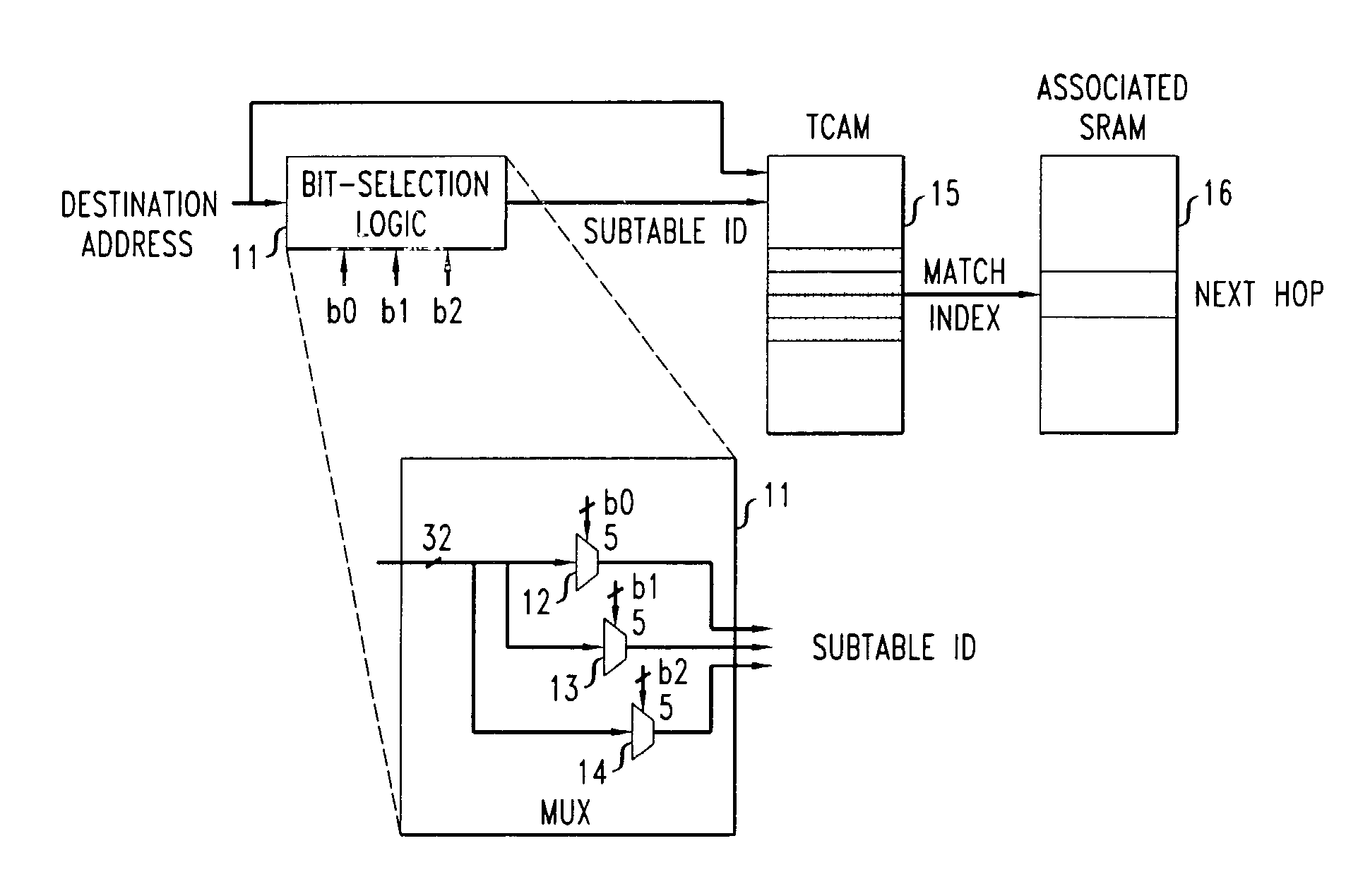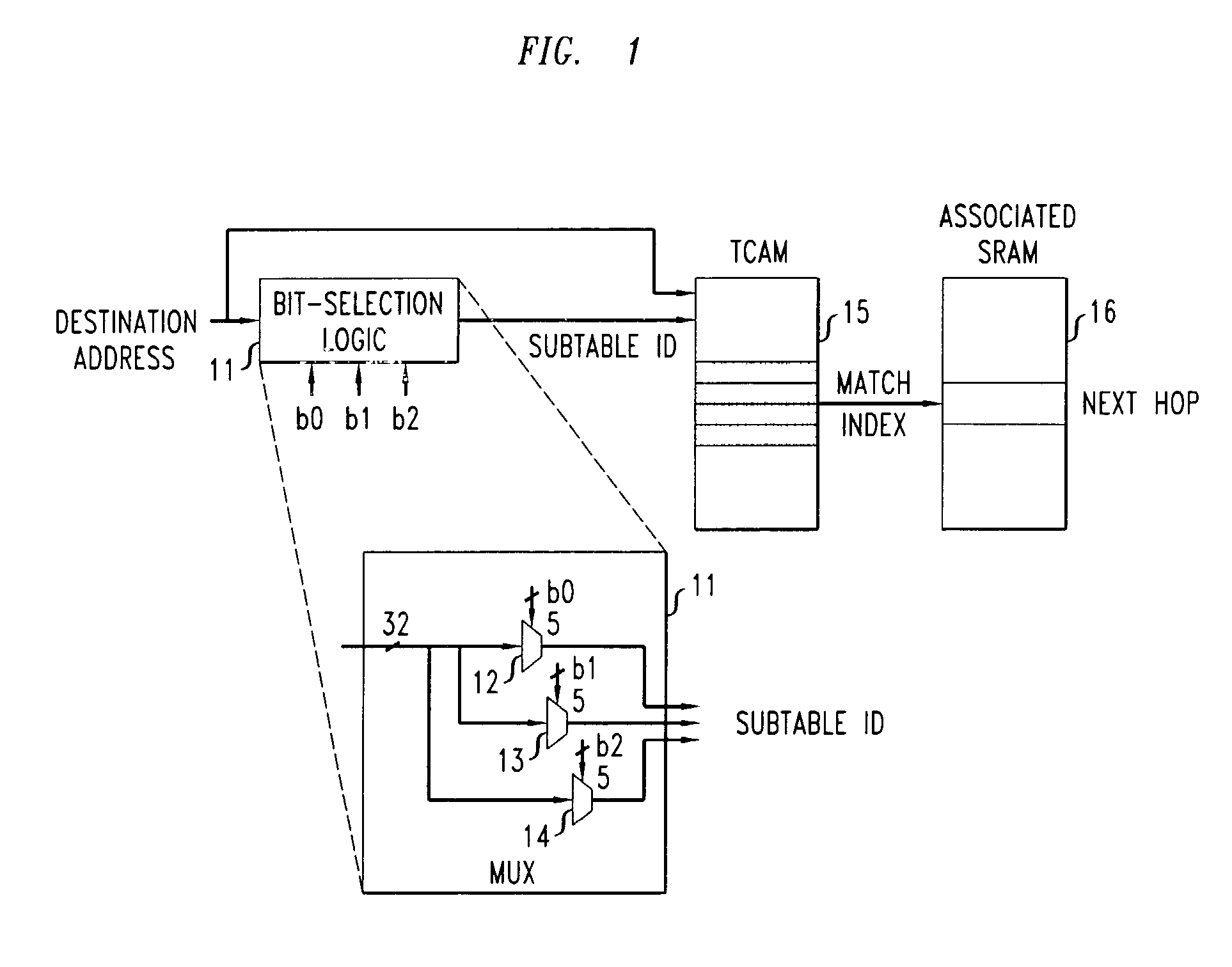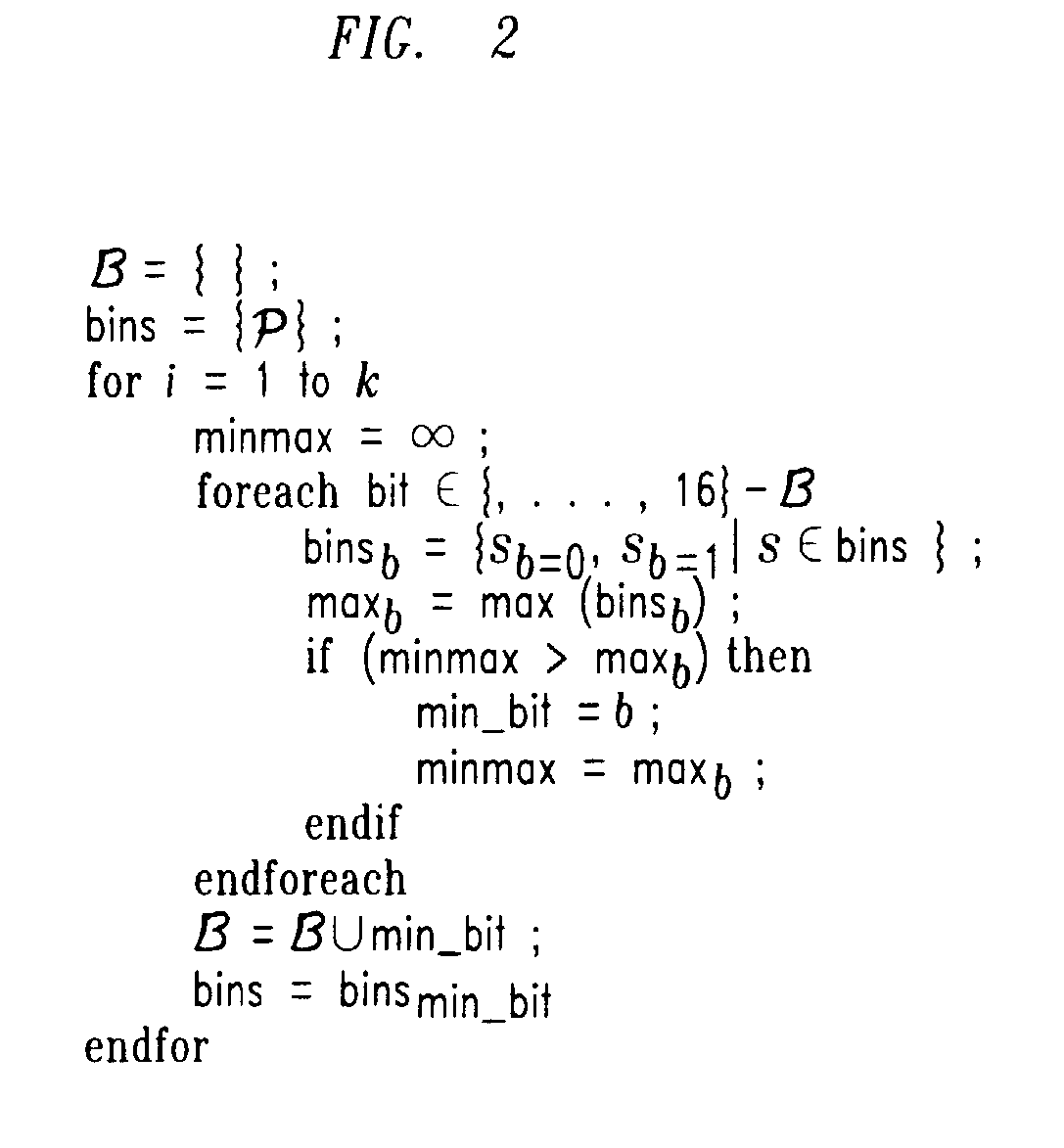Method and apparatus for performing network routing with use of power efficient TCAM-based forwarding engine architectures
- Summary
- Abstract
- Description
- Claims
- Application Information
AI Technical Summary
Benefits of technology
Problems solved by technology
Method used
Image
Examples
Embodiment Construction
Summary Review of TCAM Use in Forwarding Engine Address Lookups
[0019]A Ternary Content Addressable Memory (TCAM) is a fully associative memory that allows a “don't care” state for each memory cell, in addition to a “0” and a “1”. A memory cell in a “don't care” state matches both a “0” and a “1” in the corresponding input bit. The contents of a TCAM can be searched in parallel and a matching entry, if it exists, can be found in a single cycle (i.e., using a single TCAM access). If multiple entries match the input, the entry with the lowest address in the TCAM is typically returned as the result.
[0020]The characteristics described above make TCAMs an attractive technology for packet-based network lookup operations, such as IP route lookups in which the destination address of an incoming packet is matched with the “longest matching prefix” in a routing table database in order to obtain “next-hop” routing information. In particular, TCAMs can be illustratively used to implement such ro...
PUM
 Login to View More
Login to View More Abstract
Description
Claims
Application Information
 Login to View More
Login to View More - R&D
- Intellectual Property
- Life Sciences
- Materials
- Tech Scout
- Unparalleled Data Quality
- Higher Quality Content
- 60% Fewer Hallucinations
Browse by: Latest US Patents, China's latest patents, Technical Efficacy Thesaurus, Application Domain, Technology Topic, Popular Technical Reports.
© 2025 PatSnap. All rights reserved.Legal|Privacy policy|Modern Slavery Act Transparency Statement|Sitemap|About US| Contact US: help@patsnap.com



